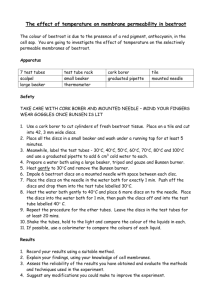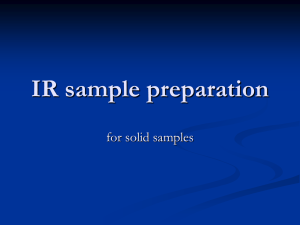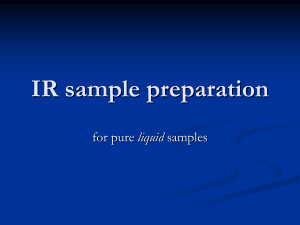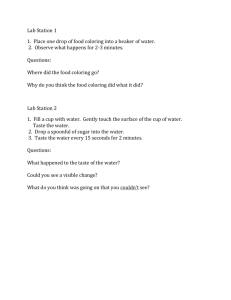Permeability Lab
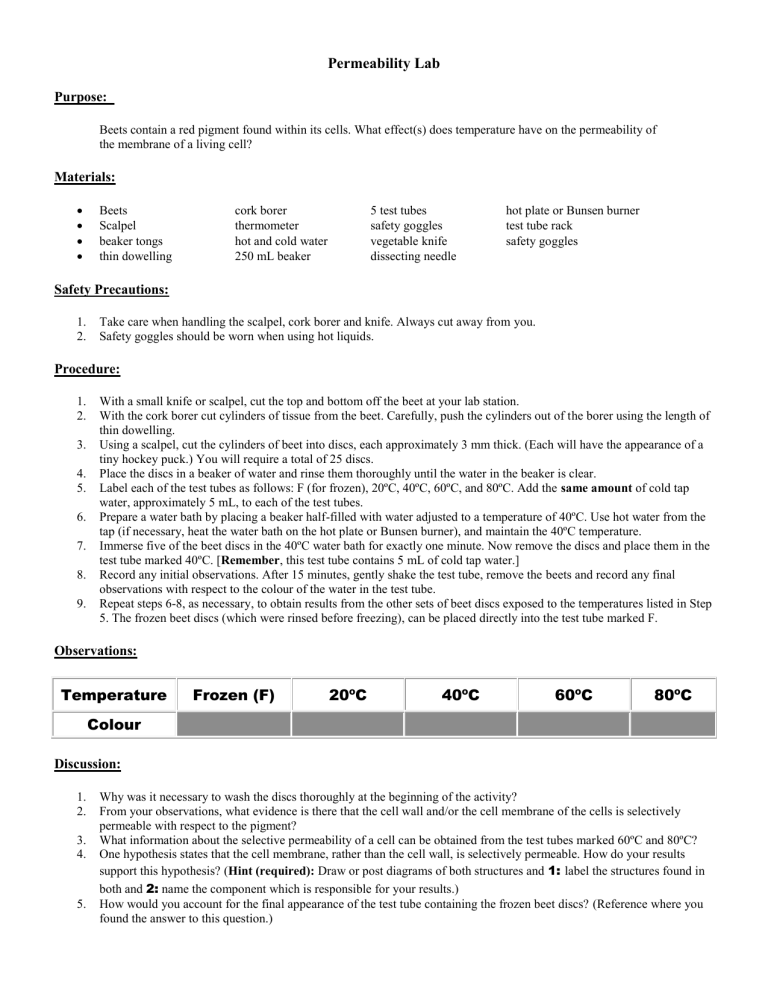
Permeability Lab
Purpose:
Beets contain a red pigment found within its cells. What effect(s) does temperature have on the permeability of the membrane of a living cell?
Materials:
Beets
Scalpel
beaker tongs
thin dowelling cork borer thermometer hot and cold water
250 mL beaker
5 test tubes safety goggles vegetable knife dissecting needle hot plate or Bunsen burner test tube rack safety goggles
Safety Precautions:
1.
Take care when handling the scalpel, cork borer and knife. Always cut away from you.
2.
Safety goggles should be worn when using hot liquids.
Procedure:
1.
With a small knife or scalpel, cut the top and bottom off the beet at your lab station.
2.
With the cork borer cut cylinders of tissue from the beet. Carefully, push the cylinders out of the borer using the length of thin dowelling.
3.
Using a scalpel, cut the cylinders of beet into discs, each approximately 3 mm thick. (Each will have the appearance of a tiny hockey puck.) You will require a total of 25 discs.
4.
Place the discs in a beaker of water and rinse them thoroughly until the water in the beaker is clear.
5.
Label each of the test tubes as follows: F (for frozen), 20ºC, 40ºC, 60ºC, and 80ºC. Add the same amount of cold tap water, approximately 5 mL, to each of the test tubes.
6.
Prepare a water bath by placing a beaker half-filled with water adjusted to a temperature of 40ºC. Use hot water from the tap (if necessary, heat the water bath on the hot plate or Bunsen burner), and maintain the 40ºC temperature.
7.
Immerse five of the beet discs in the 40ºC water bath for exactly one minute. Now remove the discs and place them in the test tube marked 40ºC. [ Remember , this test tube contains 5 mL of cold tap water.]
8.
Record any initial observations. After 15 minutes, gently shake the test tube, remove the beets and record any final observations with respect to the colour of the water in the test tube.
9.
Repeat steps 6-8, as necessary, to obtain results from the other sets of beet discs exposed to the temperatures listed in Step
5. The frozen beet discs (which were rinsed before freezing), can be placed directly into the test tube marked F.
Observations:
Temperature Frozen (F)
Colour
20ºC 40ºC 60ºC 80ºC
Discussion:
1.
Why was it necessary to wash the discs thoroughly at the beginning of the activity?
2.
From your observations, what evidence is there that the cell wall and/or the cell membrane of the cells is selectively permeable with respect to the pigment?
3.
What information about the selective permeability of a cell can be obtained from the test tubes marked 60ºC and 80ºC?
4.
One hypothesis states that the cell membrane, rather than the cell wall, is selectively permeable. How do your results support this hypothesis? ( Hint (required): Draw or post diagrams of both structures and
1: label the structures found in both and
2:
name the component which is responsible for your results.)
5.
How would you account for the final appearance of the test tube containing the frozen beet discs? (Reference where you found the answer to this question.)
